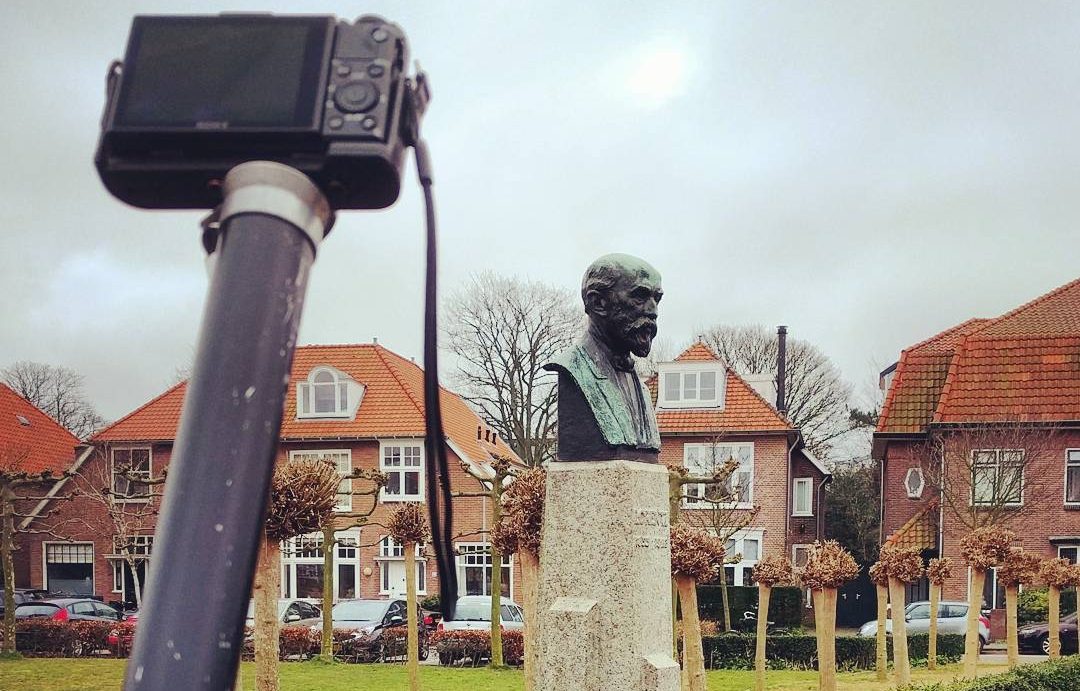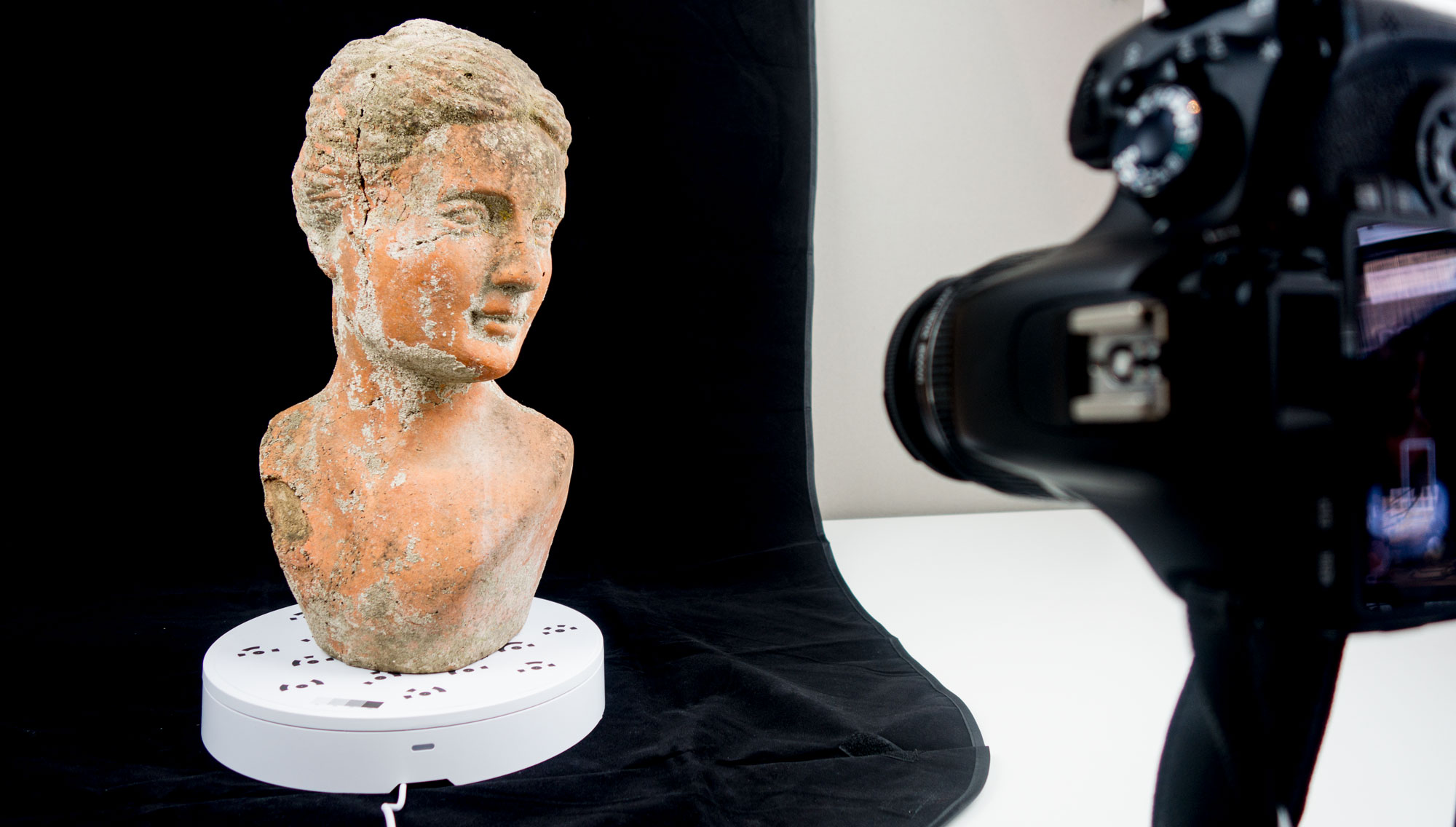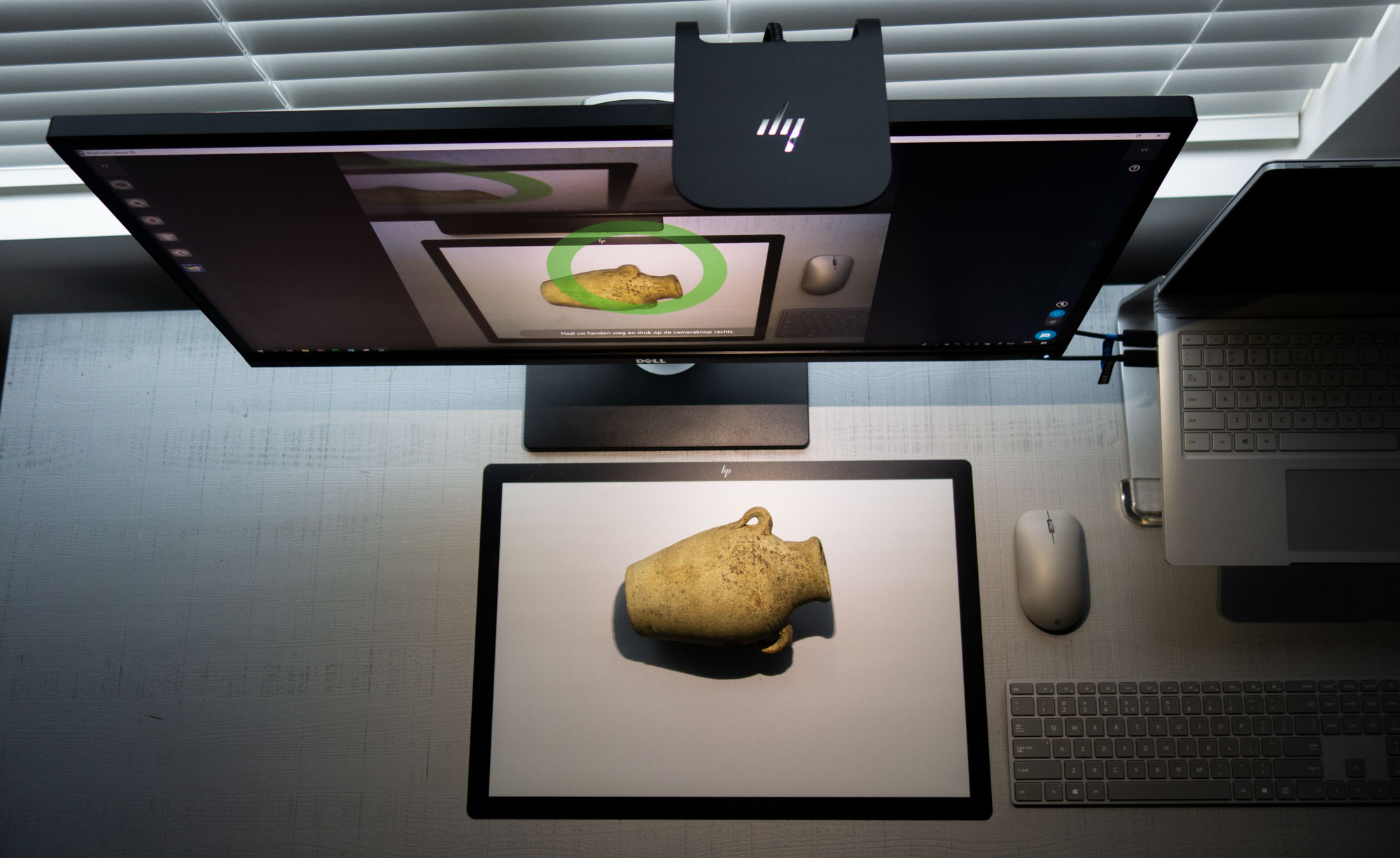When I reviewed the original Sprout Pro by HP, I was impressed by how the user experience possibilities of the combination of the down-facing projector and touch mat. I was less enthusiastic about the Sprout’s 3D scanning capabilities. While the structured light scanning technology allowed very high-resolution geometry and textures, the otherwise great-looking software had a hard time fusing separate scans together into a single 360° model — and it didn’t allow any manual help by the user.
At CES 2017 HP announced the second generation Sprout Pro, aptly named the G2. It looks like this:
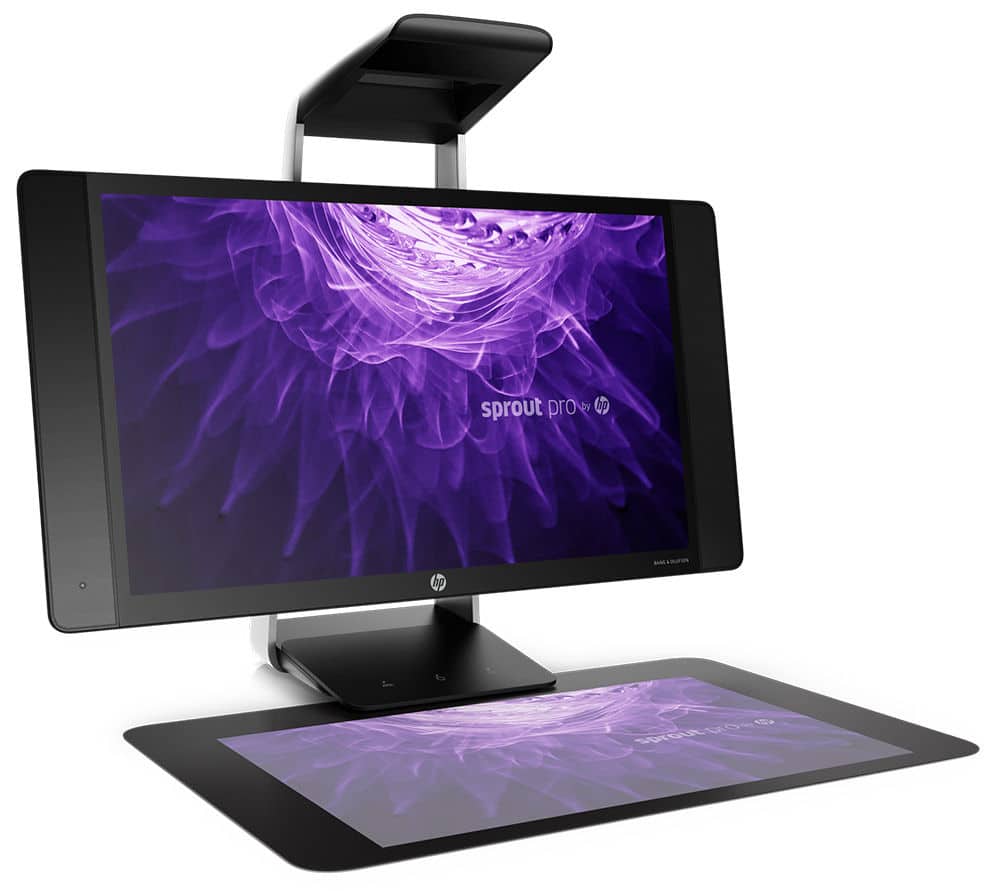
The overal design has been updated and the all-in-one machine now comes in Batman-friendly black. Both the regular touch screen and the touch mat are bigger on the new Sprout (23.8″ and 21.3″) but more importantly, they now both have a Full HD resolution. On the original Sprout I found graphics look too pixelated on the touch mat, which should now be fixed.
Also upgraded is the graphic processor, which is now a respectable Nvidia GeForce GT 960M — a big improvement over the original’s GT 945A if you want to use the computer for 3D work. The already-great Core i7 processor has been upgraded to the latest 7th generation chips from Intel.
For 3D and 2D artists alike, the bigger touch mat will be nice to start with but HP also updated the stylus. It’s now an active pen with 2048 pressure levels.
All these updates are nice, but as you might expect I’m most interested in the updates to the 3D scanning capabilities of the Sprout Pro G2. The good news here is that many of the updates have come from HP’s acquisition of professional 3D Scanner manufacturer DAVID. The photo below makes this very clear:
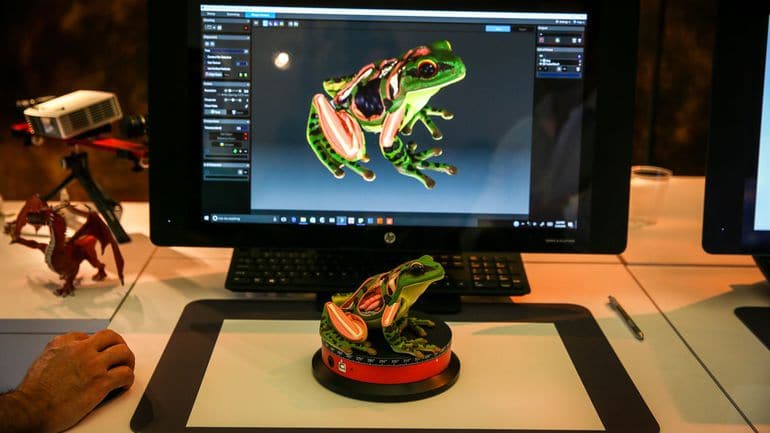
First of all, there’s a DAVID SLS-3 3D Scanner in the background and the DAVID TT-1 turntable on the touch mat. I will receive both this week, so expect a review soon. Of course the DAVID hardware won’t come included with the new Sprout, but they will be seamlessly compatible with it and I can imagine HP will create nice 3D scanning bundles.
What does come with the Sprout Pro G2 is new 3D scanning software that’s based on DAVID’s many years of experience in this field. The software can be used both with the separate DAVID hardware and the internal 3D scanner in the Sprout G2. As you can see in the photo above, this software offers a lot more options than that supplied with the original Sprout and will probably appeal more to professionals.
The internal 3D capture hardware has also been upgraded. In my review of the original Sprout, I discovered that the included Intel RealSense 3D camera wasn’t used at all for 3D scanning so it’s no surprise that this depth sensor didn’t make a return. Instead, the Sprout Pro G2 features a real-time depth sensor developed by HP and Orbbec, a company that specializes in this kind of hardware.
I found a great video by CRN in which Sprout creator Brad Short shows the improved 3D scanning on the Sprout Pro G2. This clearly shows how much 3D scanning with the included hardware and software has been improved. In the video below, you’ll see that Brad first makes a 3D scan of a tool in an interactive manner.
That very much looks like a depth sensor procedure, but the software cleverly leaves out Brad’s hand while rotating the tool. At first, the textures on the digital 3D object look very depth-sensor-ish, meaning they aren’t very good. But the software can create a high resolution texture by taking a few photos with the 14.6 megapixel down-facing camera and map this onto the model.
I’m not sure if the Sprout Pro G2 still supports the original’s method of segmented structured light scanning. If it does, that would probably offer higher-quality meshes than the new interactive capturing method, so it would be great to have them both.
Dutch Sprout reseller De Rekenwinkel told me that they’ll try to provide me with a Sprout Pro G2 just like they kindly did with the original. Follow me on Twitter, Facebook or Instagram to know when that happens.
This week, I’ll start testing the HP/DAVID SLS-3 professional 3D scanner, which probably already give great insights into the software.
